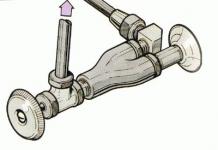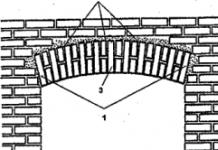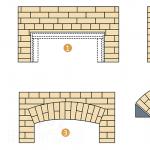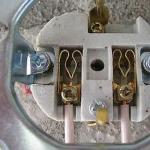Carrots consist of two parts: a juicy root crop and green mass, which ensures the process of photosynthesis. Many gardeners are wondering if it is necessary to cut the tops of carrots? If yes, when to remove the aerial part of the plant. 
The leaves of the carrots are cut off only after collecting it from the garden. It is necessary to carry out the removal of greenery, observing certain rules so as not to damage the root crop.
Important! In no case should you cut the tops when the carrot grows in the garden. If this is done, the roots will begin to wither or rot.
Before cutting the tops, you need to dig up the vegetables and dry them. If they are too deep in the ground, then they can be washed and dried for several days so that the moisture completely evaporates.
Pruning is necessary so that the root crops do not dry out from the fact that the green mass takes away nutrients and moisture, or do not rot.
The technology for removing tops depends on the duration of its storage and the purpose of use:
- if cut higher by 2 centimeters from the head, then the carrot will be stored for up to three months. Use this technology for planting in the ground to get seed material;
- if the tops are cut 2 mm higher from the head, then the germination process will be stopped and the root crop will be completely preserved up to 6 months.
Harvesting of carrots takes place at the end of September, beginning of October, therefore, pruning of the green part of the plant falls on this time.
Trimming Rules

Following the basic rules for pruning carrot tops, the vegetable will lie until the next harvest:
- You need to cut the tops on the same day that the root crops were harvested from the garden. Do not leave vegetables to lie for a long time, they may wilt.
- Before pruning, clean the fruits from the ground and dry for several hours.
- Cut the greens with a sharp knife. In no case, do not cut off the tops with your hands and do not twist it.
- Sprinkle the cut with chalk so that no fungi and microorganisms that provoke decay get there.
- After trimming, the vegetables are put in boxes, sprinkled with sand. Carrots are taken to the cellar or basement fourteen days after harvest. During this time, the skin should be completely coarsened, and if there are slightly rotten vegetables, they can be thrown away immediately without storing them.
Where can you use the tops of carrots

Juicy carrot stems are an excellent ingredient for various dishes and healing tinctures for diseases, but not everyone knows about it. Everyone is used to the fact that tops are a waste.
Meanwhile, the green mass can be used:
For the preparation of medicinal folk preparations:
- from hemorrhoids. To treat the disease, you need to make tea. Grind green stems (fresh or dried), place one teaspoon in a cup and pour boiling water over it. Insist half an hour. You should drink no more than one cup per day. The course of treatment is 2 months;
- with allergic rashes, dermatitis. In a small container, place 2 tablespoons of chopped tops, pour boiling water, leave for several hours. Make lotions with the resulting infusion.
Important! Before using the leaves as a treatment, check with your doctor.
In cooking. The stems are used in the preparation of various soups, casseroles, and pickling other vegetables. Greens can be dried, put in plastic bags and stored in the freezer. For use, choose only green branches, without the slightest deformation.
Attention: Carrot due to its structure, and its peel is very thin, is sensitive to external influences. With errors in storage, it quickly becomes flabby, withers and rots, is affected by pests.
In carrots, the percentage of water is high - up to 80%. Therefore, any negative impact - very humid, damp or dry air in the place of its storage - is unfavorable. The moisture from the root crops evaporates and the carrots wither.
The microclimate in storage areas should be constant: without temperature fluctuations and sudden changes in humidity. Carrots will be well stored and have a marketable appearance if the right conditions are created:
- Observe the optimum storage temperature, not exceeding 2°C.
- Provide air ventilation. Do not make drafts.
- Humidity should be high, not lower than 90%.
Carrots will be reliably preserved if artificial air ventilation is created in the storage, and the optimum temperature and humidity are constantly maintained.
Choosing the Right Variety
Choosing the right variety for long-term storage is an important condition for guaranteeing success.. They must be of high density, not affected by diseases, without mechanical damage.
It is advisable not to use early root varieties for laying for the winter. The moisture from them evaporates quickly, they are best used fresh. But, if the summer is short and rainy, then later varieties do not ripen completely, do not accumulate sugar and fiber, which means that their keeping quality is low.
When buying seeds, you should pay attention to the following characteristics of the variety:
- the fruit must have the correct shape;
- have a high yield;
- well kept.
- Moscow winter. High-yielding, with medium ripeness, can be stored for up to a year.
- Shantane. Refers to mid-season and high-yielding varieties. The vegetable is juicy, with a sweet taste and a pleasant smell. The shelf life is about 10 months.
- Nantes. An early variety, but subject to the conditions, the shelf life is from 8 to 10 months. Has excellent taste.
The following varieties are also characterized by high keeping quality:
- Forto.
- Vita Long.
- Autumn queen.
- Karlen.
- Vitamin 6.
- Samson Cascade.
- Nigel.
What is pruning and why is it needed?
Pruning root crops - the procedure for removing tops from vegetables. It helps to retain useful substances in carrots, stops rotting, drying out and, as a result, damage to the entire crop.
The tops left on the root soon begin to grow actively, take water and useful trace elements from the vegetable. Therefore, this process is mandatory.
When cutting carrots, it is advisable to take into account the shelf life:
- up to 3-4 months- the tops are cut 2-3 cm above the head of the fetus;
- up to 10-12 months– the tops are cut along with the head of the vegetable by 2 or 3 centimeters, so the vegetables are prepared for long-term storage.
When pruning is deep, with the capture of part of the vegetable, the process of fruit germination stops. So, they remain juicy, their taste qualities are preserved. If the carrot is intended for seeds, then the green part of the plant is cut off, leaving 2 cm.
Do I need to prune if I store a vegetable in the cellar?
Whatever the storage technology, it is necessary to cut the tops from carrots. For storage in the cellar, this procedure is required! The knife must be very sharp so that no hemp or cuttings remain on the carrots. In the cellar, such carrots will not be able to germinate, which means they will retain their taste and useful properties.
Detailed instructions on how to do it
Immediately after harvesting the carrots, on the same day, dry them and, in warm sunny weather, you need to start pruning. Properly trimming carrots is a very important process, which ultimately determines whether the entire crop is preserved. Sometimes it is recommended to remove the tops before harvesting. But in this case it will be inconvenient to pull vegetables out of the ground.
Leaves should not be removed by twisting, tearing or breaking. This can damage the root crop.
Let's describe in detail the process of proper pruning of carrots:
- You need to sharpen your knife or scissors well so that they are as sharp as possible.
- Since carrots are fragile vegetables, they can break with any carelessness. Therefore, pruning is carried out in two stages: first you need to remove the leaves from the root crops.
- Then cut off the tops. How to cut it? This should be done by capturing a few centimeters of the root crop. How far the cut is below the head of the vegetable depends on the purpose of storage.
- Chalk is sometimes applied to a fresh cut for a reliable result.
- Carefully make sure that there are no growing points or stumps at the cut site.
- Store root vegetables in a cool, dry, well-ventilated place. Wait until the cut surface on each vegetable is covered with a dry crust.
- After that, once again view the harvested crop and weed out blackened or spoiled root crops.
- Store carrots.
Ways to save
There are several proven and guaranteed success ways to store trimmed carrots well.
Wooden or plastic boxes in the basement
The boxes must be installed no closer than 15-20 cm from the storage wall, due to possible dampness. It is better to install a box with root crops on a stand or shelf.
Advice: The volume of containers should be taken at the rate of 15-20 kg of root crops per container.
Types of fillers in boxes:

Watch a video on how to store carrots:
Polyethylene bags
When storing carrots in bags, you can choose containers of any volume, but up to 25-30 kg. It is better to use small packages, designed for 1.5-2 kg, so that it is easier to transport and detect spoilage among root crops.
Pre-prepared root crops are packaged in tight bags, lowered into the basement or placed in a cool and dry warehouse. It is necessary to install packages on shelves or a special stand.
Packages need not be closed, or many small holes should be made at the bottom. This is necessary for ventilation so that condensation does not accumulate inside the bag. If, however, the condensate rises, then you can scatter substances that absorb moisture.
The advantages of this method:
- high air humidity in bags;
- purity of root crops during storage;
- rodent protection;
- any place in the room or cellar is suitable for placing bags.
But with this method of storage, part of the taste of carrots is lost.
Watch a video about storing carrots in plastic bags:
In a pot or jar
One of the storage methods is that the prepared root crops are placed in enameled pans or aluminum cans. In this case, the root crops in the container are stacked vertically.. A lid is placed on top. This method is suitable for cool rooms.
Simple bulk method
 deprecated method. Carrots are poured in a slide on the floor in the cellar or basement. With this method, the crop is in danger of being eaten by rodents. In such a pile, root crops can dry out faster.
deprecated method. Carrots are poured in a slide on the floor in the cellar or basement. With this method, the crop is in danger of being eaten by rodents. In such a pile, root crops can dry out faster.
Depending on which technology is chosen, the shelf life of carrots changes.:
- in a clay or chalk "shirt" it will last the longest - for a year;
- in containers filled with sand, sawdust, onion peel - no more than 8 months;
- poured on the floor or in boxes without fillers - up to six months;
- packed in polyethylene bags, plastic bags - no more than six months.
Possible problems
Carrots during storage can rot, lose taste, reduce weight, lose marketability. You need to make sure this doesn't happen. To do this, take the necessary measures:
- make sure that moisture does not evaporate;
- maintain a constant temperature;
- ensure good ventilation and air exchange in the room;
- regularly sort out and inspect root crops;
- remove damaged fruits, especially those affected by rot;
- in partially spoiled vegetables, remove the rotting site and process the remainder using a solution of slaked lime or chalk.
Here are some tips and warnings for storing carrots.:
- It is very important already at the stage when the harvest is taking place, to discard all damaged root crops. High keeping quality is observed only in ripe and healthy specimens.
- So that microcracks do not form on the carrots, which reduce the shelf life, it is not recommended, after digging, to strongly shake the ground from the vegetables, tap them.
- After trimming the tops from carrots, you must definitely wait until the cut dries and tightens with a crust.
- You need to dry not only carrots, but also storage. It must be dry and cool.
- If there is a threat of freezing vegetables in the basement, then you can wrap containers with carrots with any of the heat-insulating materials.
- Carrots should be isolated from direct sunlight. You need to monitor the humidity in the room so that it is optimal.
- It is necessary to act according to the principle: the smaller the fruit, the sooner it can be processed. Large large root crops store better.
- When carrots are infected with rot, do not sort out root crops. Very carefully remove infected fruits and spray this area with fluffy lime to eliminate the source of infection.
Important: The most unsuitable neighbors for carrots are apples. Ethylene released from fruits has a negative effect on the taste of the root crop.
Having become familiar with the methods of storage and the process of pruning carrots, each gardener will be able not only to grow a good crop, but also to take advantage of the result of his work. A properly preserved vegetable is a source of vitamins and delicious food for the winter table.
If you find an error, please highlight a piece of text and click Ctrl+Enter.
Carrots during storage of all vegetables are most susceptible to rotting .
You can always have this delicious product fresh and crispy at hand if properly prepare to wintering.
There are many options for this. Let's analyze what actions are needed for the correct laying in the basement, pit, or just home storage in the apartment of this tasty and healthy vegetables.
How to prepare carrots for storage for the winter? It is necessary to remove the carrots on time, that is before the first frost. Weeding before harvesting is done if the bed is heavily overgrown with weeds. An unripe vegetable is not as useful as fully ripe. And overexposure to it in the garden is fraught with excessive accumulation of sugars, and it is also more often attacked by mice and insects.
Read about how and when it is better to harvest carrots on our website. When harvesting carrots sort by the size of root crops and by their damage.
The tops are cut to the head of the vegetable, and twice. The first time, its leaves are removed, and the second time it is cut below the upper edge of the head. by 1 cm. This will prevent winter germination and wilting.
How to cut carrots for storage - photo:

How to cut beets and carrots for storage? For carrots intended for seeds, tops are left long up to 2 cm. It is possible to wash the root crop only if its head is heavily contaminated with moist soil. When digging it out of sandy soil, it is enough to shake off the dirt. For more information on how beets are cut before laying for long-term storage, read on our website.
Is it possible to wash carrots for storage for the winter? Carrot washing is done on harvest day warm water without soap or other substances, then it is dried before laying for winter storage in the air under a canopy and then kept at a temperature 10 to 14 degrees Celsius heat. On this "quarantine" carrots are from 7 to 10 days, depending on the humidity of the air. After it, it is again sorted by the presence of damage.
How to process carrots for storage? Do I need to wash carrots before storing them? There are several ways to store carrots. Before this, the vegetable is processed potassium permanganate solution.
Processing pure carrots with potassium permanganate is carried out in a large container (basin or bath). getting ready dark purple solution and poured over the vegetables laid there. Exposure lasts up to 2 hours, then the carrots are removed and dried out on thick fabric or canvas.
This method of processing is effective only against damage to root crops by white rot and pests. Potential for fruit damage black rot remains. The procedure for processing carrots before laying them for winter storage is as follows:

How to store carrots?
The most acceptable temperature for storing washed carrots in winter - from 0 to +1 degrees Celsius. Above this limit, germination begins. In the garden, vegetables are already damaged at minus 2 degrees Celsius. You can learn about the possibility of storing carrots in winter right in the garden in the garden from our article.
In the storage (cellar, basement), you can stack carrots in piles (piles) without using containers, pouring sand over the rows. Define sand moisture simple - squeeze in the palm of your hand, the lump should not crumble. Carrots are in piles heads out. Read about ways to store carrots in the cellar or basement on our website.
 You can store it in a small, covered with straw trench, but ventilated if not sprinkled with sand or sawdust.
You can store it in a small, covered with straw trench, but ventilated if not sprinkled with sand or sawdust.
A product rich in carotene in winter will very useful. What soup without carrots! It strengthens teeth, improves vision and memory, and protects against heart disease. Find out how to cook sun-dried carrots here. Eat carrots in winter, health will improve!
In general, carrots are a rather unpretentious vegetable, which is accepted almost everywhere. However, attention should be paid to a number of features. It is desirable to take them into account when growing this root crop, since only in this case it will be possible to achieve a good harvest.
First of all, you should pay attention to the quality of the soil in which you will plant carrots. Loamy and sandy soil is preferred.
If there is a clay type of soil, it will need to be structured. To do this, it is best to use sand, organic components (for example, compost, humus), which will need to be added to the soil. When mixing all the components in equal proportions, you get a good basis for growing carrots. There are other features that can significantly affect the volume of the crop.
Do not forget that it is desirable to plant a vegetable on neutral soil or with a high alkali content. The level of acidity above the permissible level will not allow you to get a quality product at the end of the season, and the root crops themselves will lose their taste properties.
If the soil on the site has an increased level of acidic substances, then it is necessary to do neutralization. Usually, chalk or lime is used for this purpose. In the spring, it is better to do this using chalk with a calculation of about 1 kilogram per 3-4 square meters.

When planting, you can use top dressing for the earth. Usually wood ash is used for this. It is poured into the furrow, where carrot seeds are then thrown. Also, the soil should include organic additives. To enrich the land with such components, farmers usually use herbivore manure, bird droppings, compost, and mulching.
In the future, it is necessary to water the land in a timely manner, since carrots do not tolerate dry periods. If it is not enough to water the crop, then the root crops will gradually begin to crack.
Also, before planting, carefully read the characteristics of the carrot variety. They will differ in taste properties, the size of root crops, resistance to diseases and pests, as well as a number of other features.
For good growth and development of the root crop, sufficiently warm conditions and good lighting are required. It is undesirable to grow crops in shady areas. In the presence of favorable conditions, it is possible to achieve the appearance of the first shoots after 3 weeks. To speed up the process, you can use the covering of the land with polyethylene in order to better warm the soil.

Insufficient care can lead to the fact that the fruits acquire some deviations - external flaws, cracking, and weak plants simply die. The unpretentiousness of a vegetable crop does not mean that you can not devote time at all when growing it.
To increase the yield, it is desirable to periodically loosen the soil so that the water passes better to the horse system.
It may also be necessary to thin out the seed, as carrots are sown unevenly. When shoots appear, it will be possible to understand in which areas there are many entrances. This must be done so that the root crops do not interfere with each other's growth.
Further thinning can slow down the growth process, so it is advisable to do it in the early stages. The optimal distance between the fruits can be considered about 5 centimeters.
Video "How to grow productive carrots in high beds"
Harvesting time usually depends on the variety of carrots. Early-ripening varieties of vegetables are usually harvested at the end of July, mid-ripening and late-ripening in September. It is advisable to do everything before the onset of seasonal cooling or frost (depending on the landing area).

Cleaning is best done in dry weather. For digging, use a fork or a bayonet shovel. After digging, it will be necessary to dry the root crops well in the shade. Before this, the tops of carrots are cut with garden shears or secateurs. It is necessary to trim the tops so that it does not draw out the nutrients that have accumulated during the growth process from the root crop.
Be careful not to damage the carrot skin during harvesting. Otherwise, they will not be able to be stored in the cellar for a long time, but will begin to deteriorate. If this happens, then you can select the damaged fruits, using them as food in the near future. The rest of the crop after drying will need to be transferred to a cool, dry place.
It is best to use wooden boxes for laying, pouring layers of sand over the carrots. This will protect the crop from sunlight and direct moisture. The use of sand for storing carrots is well established and has been used by most farmers for a long time.
The processing of carrots usually consists in the introduction of special means to protect the crop from various diseases, pathogenic microflora, and also from harmful insects.
For the fight, it is customary to use ammonia-containing preparations, Bazudin, Aktara, Medvetoks, special fungicides.
After establishing the cause that affects the root crops, a special type of directional agent is selected. It is advisable to carry out the treatment immediately after the first signs of diseases or the appearance of insects (flies, bears, leaf fleas, and others) are detected.
Many novice gardeners are interested in the question of whether it is possible to cut the tops of carrots during the last stage of vegetable ripening. The fact is that even at this time, saturation with useful microelements and vitamins continues.

For this, the vegetable needs the process of photosynthesis, and without green leaves and a stem, this is not possible. For this reason, until the completion of the growth of carrots, you can not cut the tops. If you cut it off earlier, then the growth of carrots will stop. If you do not immediately dig it out, then it will simply rot in the ground.
The tops of carrots are cut off only after digging up the root crops. So they will be stored much longer.
The video details how to achieve maximum yield when growing carrots.
The question of pruning carrot tops often arises among beginner gardeners. They are probably confused by the recommendations found on the Internet. The answer to this question is very simple.
Do I need to trim the tops of carrots
We can only talk about pruning the tops before laying in storage, you should not even talk about mowing the tops during the growing season.
Growing stage
No matter how high the tops of carrots are during the growing season, they should never be cut off. The tops are the greens of a vegetable, which means that it participates in the process of photosynthesis in the same way as the leaves of shrubs or trees.
Tops - "light" plants, a kind of respiratory and photosynthesis organ, without it, carrots will quickly die
Without it, the plant will die. Doubters can try on several copies. Immediately after cutting the tops, the root crop stops growing, after a week it withers, then rots.
Young leaves contain a lot of useful substances, and people without major health problems should use them for food. Adding them to soups adds piquancy to the taste, and it is quite possible to cut a leaf from a plant in the first half of summer, but it’s not worth it anymore.
Excess foliage does not have a negative effect on the root crop, but its removal will harm the plant. On the contrary, the larger the leaves, the more nutrients are formed in the root crop, the better it will be stored.
End of the growing season
You should not cut the tops before digging up root crops, although some gardeners do this a week before harvesting. There is an opinion that such a technique will lead to a better preparation of the root crop for winter storage, but it has not been confirmed by science.
On the contrary, there is a danger that, under favorable weather conditions, carrots left without tops will begin to grow them again. This will lead to the outflow of nutrients from the root crop into the tops and, conversely, worsen the quality of the product and its safety.
Cleaning for storage
After digging up the carrots, the tops must be removed immediately, otherwise the root crops will quickly begin to wither. Many gardeners cut off the tops by twisting immediately after removing the root crops from the ground. Others cut it with a sharp knife, leaving 1-2 cm. Carrots with the remains of the stems are stored in the cellar in the sand.
However, storage in the sand is not very convenient. Much simpler is another technique that I have been using for 30 years, and it is now popular. When digging, I cut off the tops, then wash the carrots thoroughly and dry them. I cut the tops with a clean knife along with 4–5 mm of the root crop. I put carrots in plastic bags of 2-3 kg and store them loosely closed in the cellar until the next harvest.
If you leave the top of the plant, after 3-4 months in the cellar, leaves will begin to grow from it again, so it is better to cut it
Pruning the tops of carrots during the growing process is strictly unacceptable, and shortly before harvesting is undesirable. Before storage, the tops are cut off without fail and without delay.


















